Assam, 2008
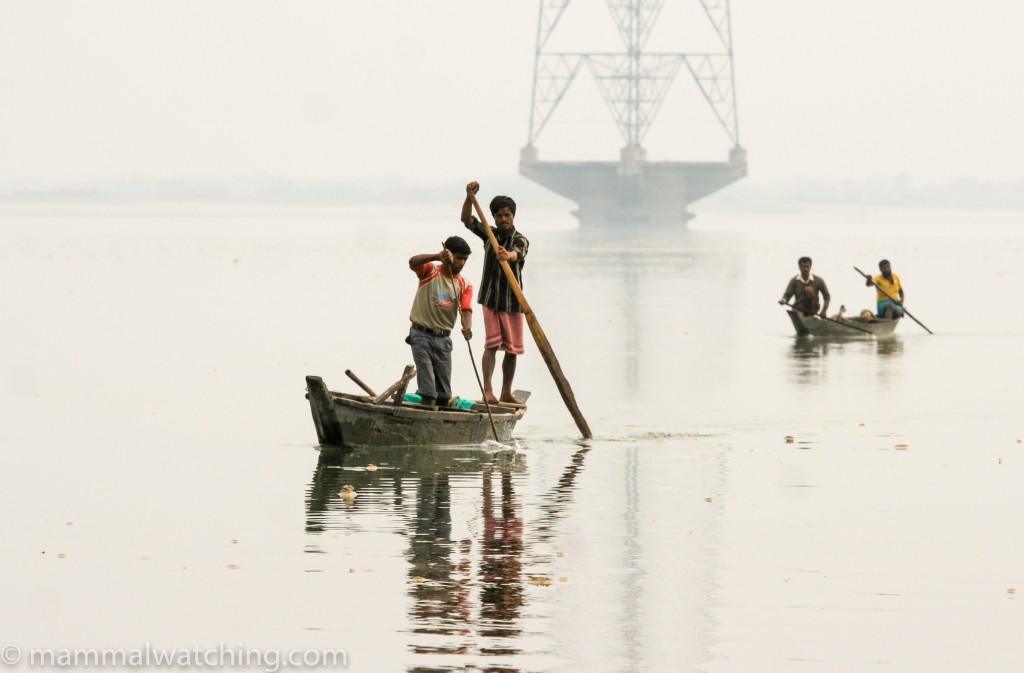
Brahmaputra River
When you cross from Bhutan to India at Gelephu you are left in no doubt that you have changed country. Although Gelephu is busy by Bhutanese standards, it is a haven of tranquility compared to the other side. Within a few yards of leaving the Bhutanese customs and immigration (there was no check by the Indian authorities … indeed I am not sure there was even a checkpoint) you are plunged into the assault and battery of India.
I had just read “White Tiger” by Aravind Adiga and his description of rural India as “The Darkness” seemed particularly apt. To make matters even darker, the local tribe had called a strike that morning, which they do randomly. “Striking” is a call for a general strike and includes closing the roads. It wasn’t safe to travel without an army escort so we had to wait for an hour in Bhutan while a convoy formed to travel into India. How exciting. If only the army would escort me to work every other week when the French trains go on strike.
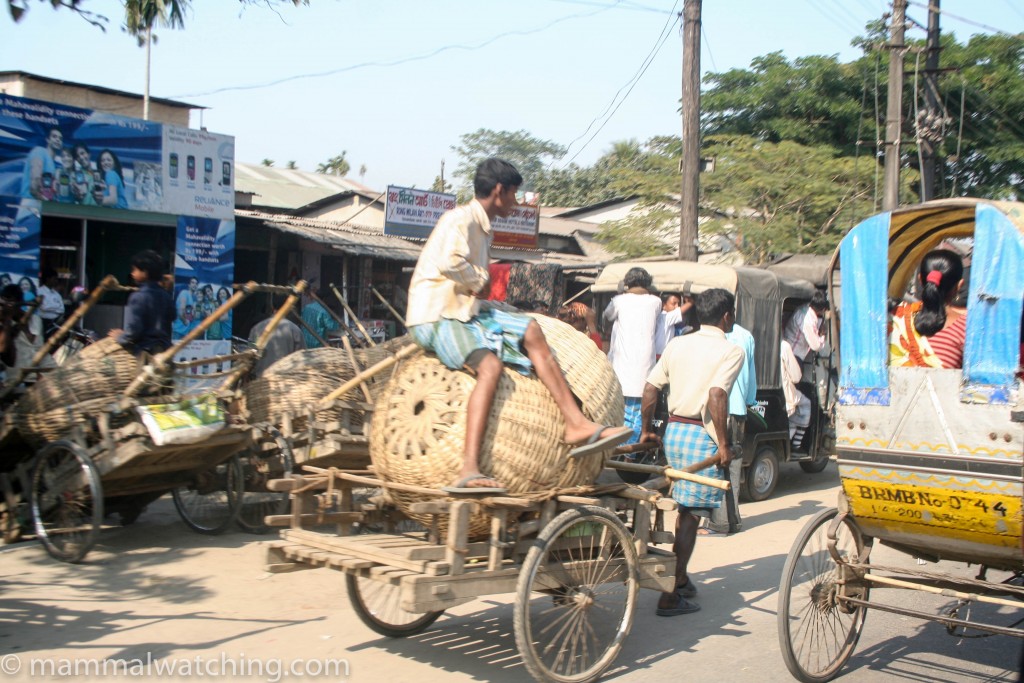
The tranquility of an Indian village ….
I had wanted to visit Assam for a few years, to try to see Hoolock Gibbons and Wild Buffalo, so when I was in Bhutan the chance to extend my trip for a few days in early December 2008 was not to be missed.
I began by organising this trip with Anil at North West Safaris, who had arranged my 2007 trip through Gujurat. Anil is knowledgeable about Indian wildlife and has a good network of contacts. After helping me plan a trip, he put me onto Manju who owns Wild Grass Resort in Kaziranga. Manju is an expert on Assamese wildlife and he arranged the car and driver, guide and everything else. Like Anil he was extremely helpful and was also ready to arrange everything and book air tickets without asking for me to transfer money.
Manju sent a party of three across the border to meet me in Gelephu: a friend of his who had been to Bhutan before, plus Jintu, my excellent guide (Jintu’s an enthusiastic birder and good all round naturalist, with very sharp eyes) and Bolu the driver, who was also a good guy.
Royal Manas National Park
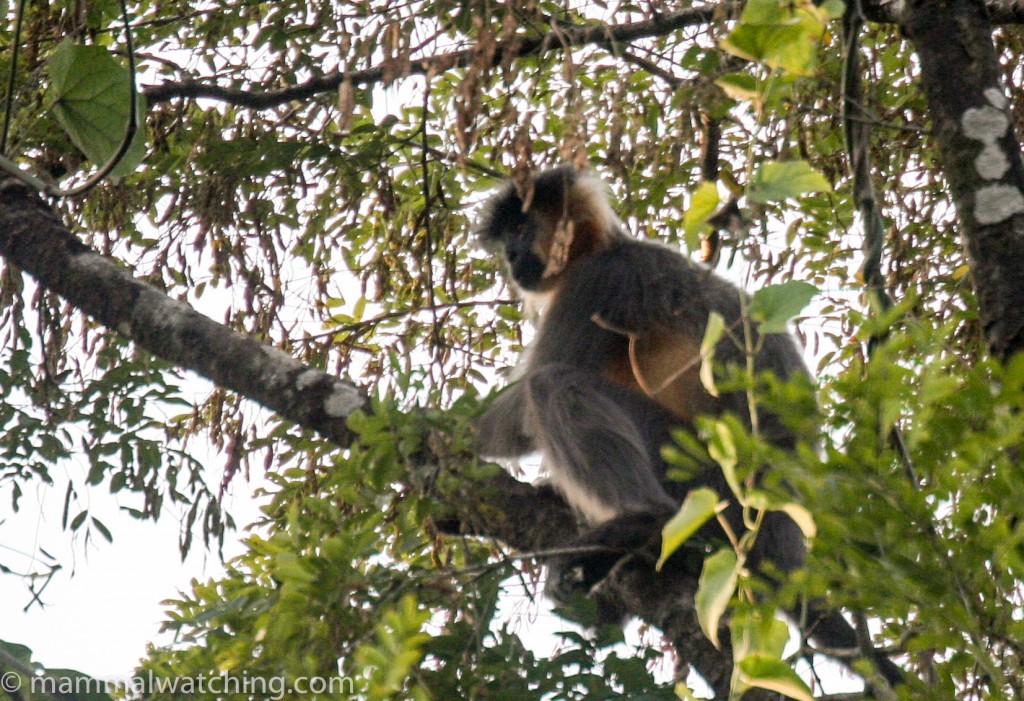
Capped Langur, Trachypithecus pileatus, Manas
It is a bone crunching four hours from Gelephu to Manas. The roads are clogged with bicycles and carts but it doesn’t matter, because the roads are in such bad condition you can’t do more than 30kmh anyway.
Royal Manas National Park was closed for several years because of security concerns and only reopened in 2004. It is taking a while for visitors to return and I was the only person in the park that afternoon.
The forest at Manas is beautiful but the grass was high and there was not a great deal to be seen. We set off about 2.30 p.m, watched the sunset over the Bhutanese hills, and returned after dark with a spotlight for an hour and a half back to the hotel.
I came here primarily to try to see Pygmy Hogs, which are apparently findable after the grass has been burnt (perhaps seen on more than 50% of game drives then). Although the grass would normally have already been burnt in early December, the work had been delayed, so my chances of seeing Pygmy Hogs were rated as very slim. I was however told I had an excellent chance to see Indian Porcupines on the drive back in the dark: they had been seen on the road during just about all of the past 20 night safaris.
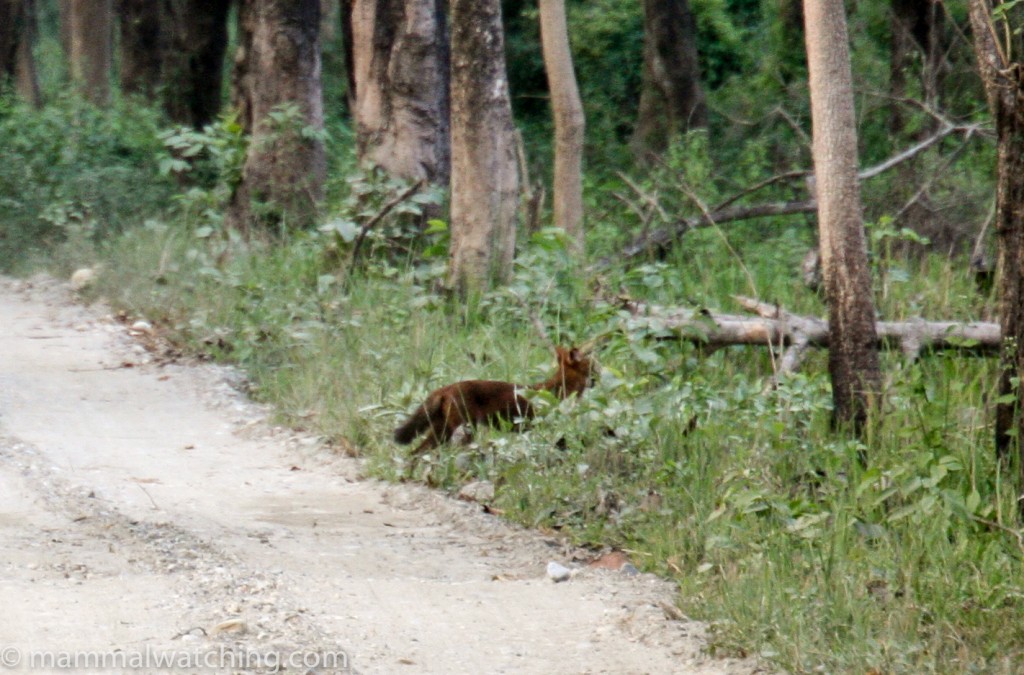
Dhole, Cuon alpinus
During the afternoon we saw several Wild Boar, a few groups of Capped Langurs (my first), a Hoary-bellied Squirrel and a lone Dhole on the road. Coming back in the dark we saw several Sambar, a couple of Barking Deer, many Hog Deer (near the hotel), a few Gaur and an Indian Hare. Unfortunately for me – and much to everyone’s surprise – we didn’t see any porcupines. I have tried several times to see Indian Porcupines on previous trips so this was frustrating.
Golden Langurs are around, though not easy to see (I made no effort to look because I had seen them so well in Bhutan). Apparently a rubber plantation nearby is a much better place to look for this species than the park itself on the Indian side.
The manager at the hotel reckoned mid January was a good time to look for Pygmy Hogs. The grass should have been burnt and the park should be quiet. Porcupines should also still be around. The deep fried egg plant at the hotel (deep fried in mustard oil) was outstanding, even if it didn’t quite make up for the lack of porcupines.
Kaziranga
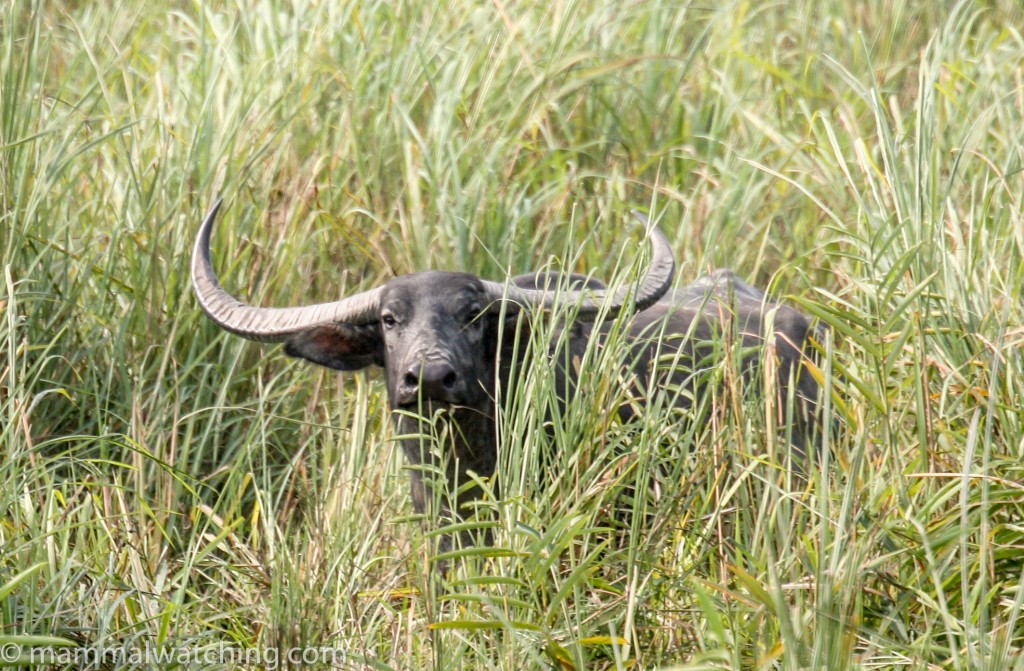
Wild Water Buffalo, Bubbles arena, Kaziranga
We left Manas early the next morning for the eight hour drive to Kaziranga. After lunch we stopped at the northern end of the Kalia Bhomora Bridge over the Brahmaputra, just out of Tezpur. This is a reliable spot for Gangetic River Dolphins. A local boatman took us for a slow chug to a spot 30 minutes away, and we had good views of at least 10 – probably many more – dolphins for over an hour.
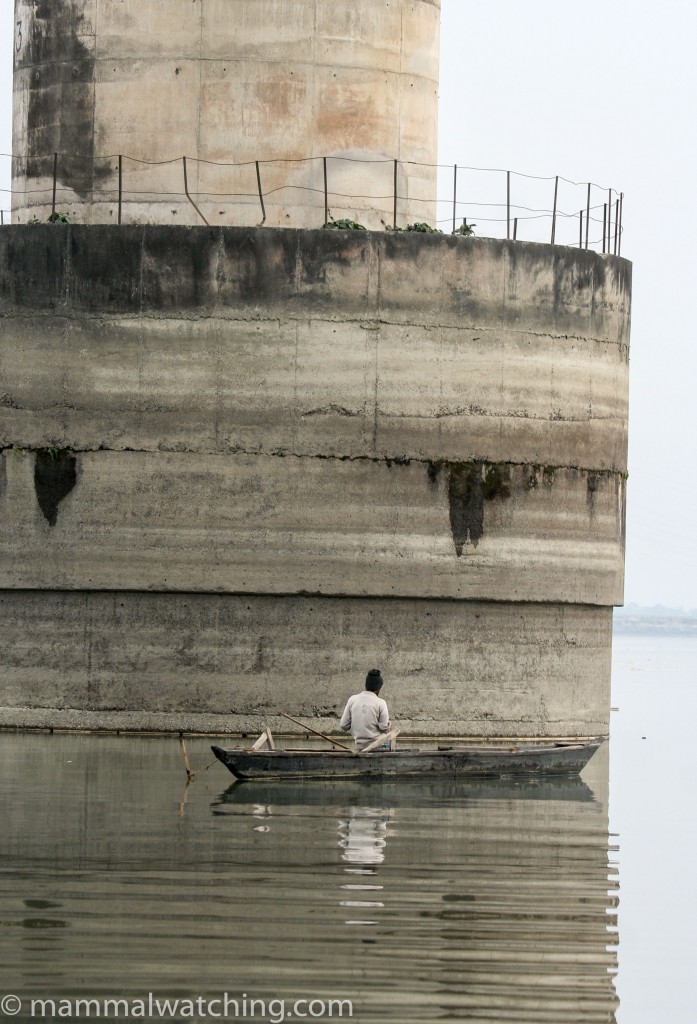
Brahmaputra River
They are very difficult beasts to photograph. They surface without warning for a second or two, which is just enough time to point the camera in their direction and push the shutter release to get a shot of the ripples. But I did manage to capture one as its beak came out of the water: I found the best technique was to point the camera at a spot of water and wait in the hope one will surface.
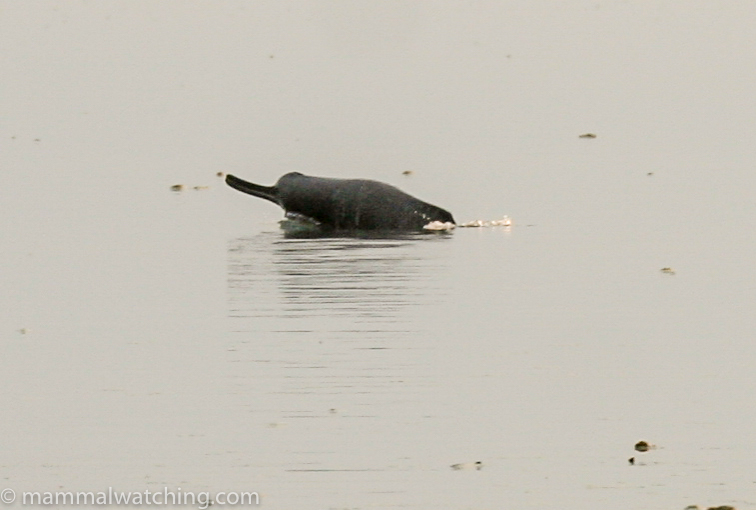
Gangetic River Dolphin, Platanista gangetica
It is another hour to Kaziranga. We arrived after dark, so slung a spotlight out of the window for the last 40km along the highway which passes through the park. A few Wild Water Buffalo (another lifer for me and my 900th mammal), some Hog Deer and a Rhesus Macaque near the bridge at Tezpur were all that we saw.
Wild Grass Resort is great: it has a real safari camp feel to it, complete with morning wake up calls with tea or coffee. Spotlighting in the park isn’t possible, but after dinner Jintu took me on a drive for a few km along the back roads to his village: a road along which he has seen Hog Badgers occasionally. We didn’t see badgers but did see a Common Palm Civet and an Indian Flying Fox in a fruiting fig tree, along with numerous buffalo and Hog Deer across the river inside the park.
Kaziranga is divided into three sections (Eastern, Central and Western) and although it is near peak season here, I still had the western section to myself that morning (apparently people tend to visit the central section in the morning and the western in the afternoon).
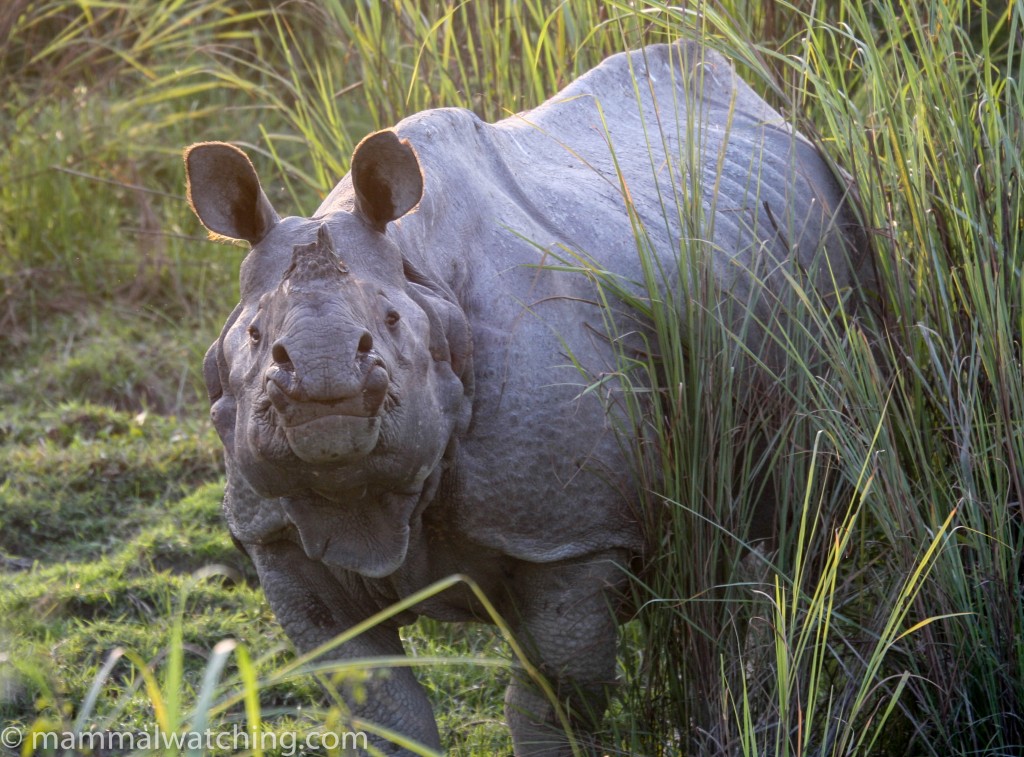
Indian Rhino, Rhinoceros unicornis
My key targets here were Wild Buffalo (which are very common) and Hog Badgers. Vivek Menon’s Field Guide to Indian Mammals rates Kaziranga as the best place to see Hog Badgers in the country. And indeed they are seen relatively often here. But they are not common. One of the guides had seen one the day before I arrived. The chances of seeing them are not helped by the fact the park opens at 7.30 a.m. (about two hours after sunrise) and closes at 4.30 p.m. (at sunset). But badgers are still seen every so often in the afternoon. We didn’t see any badgers but did see some active setts.
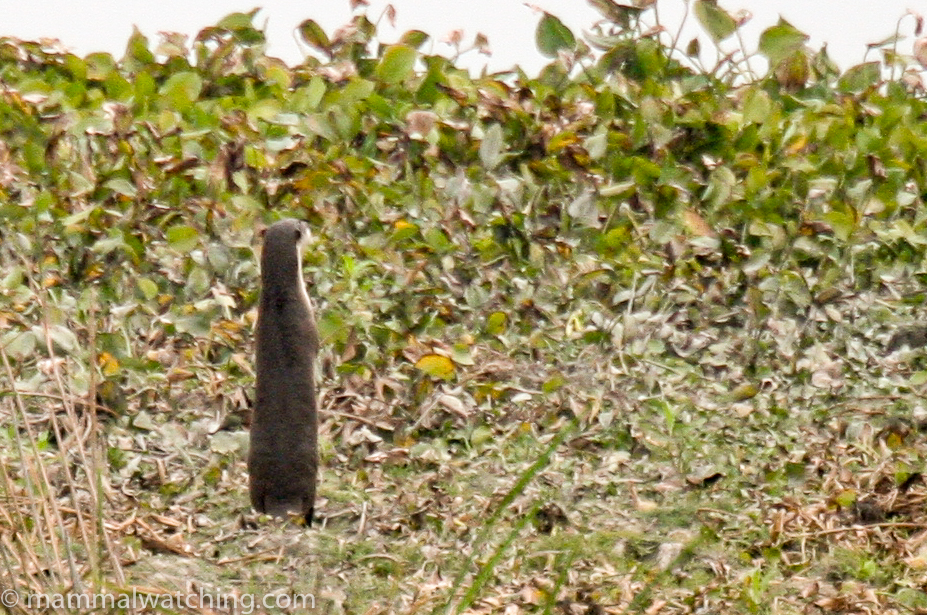
Smooth-coated Otter, Lutra perspicillata
Porcupines had also been seen in the same area in the mid-morning several times the week before I arrived. We didn’t see any. But within 30 seconds of entering the park, Jintu spotted a squirrel that turned into a Small Indian Mongoose. He saw it just for a second. I didn’t. Frustrating for me as it would have been a lifer.
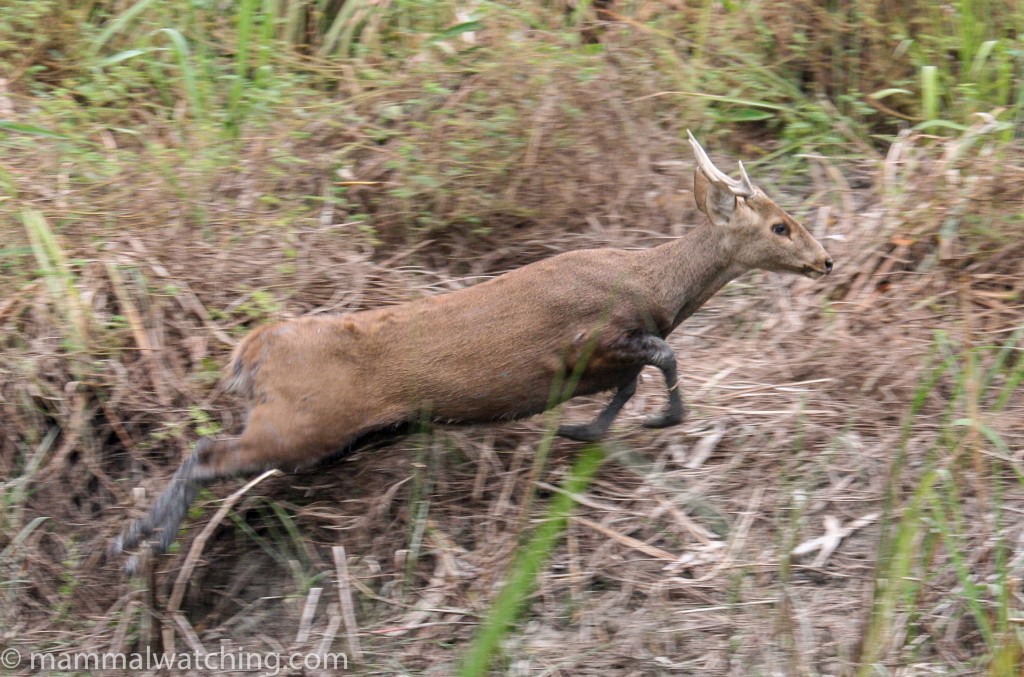
Hog Deer, Hyelaphus porcinus
Indian Rhino, Wild Buffalo and Hog Deer were abundant, and so were Hoary-bellied Squirrels. We also heard an Elephant, but I was too fixed on looking for Hog Badgers to want to wait for it. Three Smooth Coated Otters at a waterhole were a nice bonus (the species is quite common here). We also saw several sounders of Wild Boar, while a few Swamp Deer were mixed in with the large herd of Hog Deer, rhino and buffalo in the pasture opposite the observation tower just west of the park entrance.
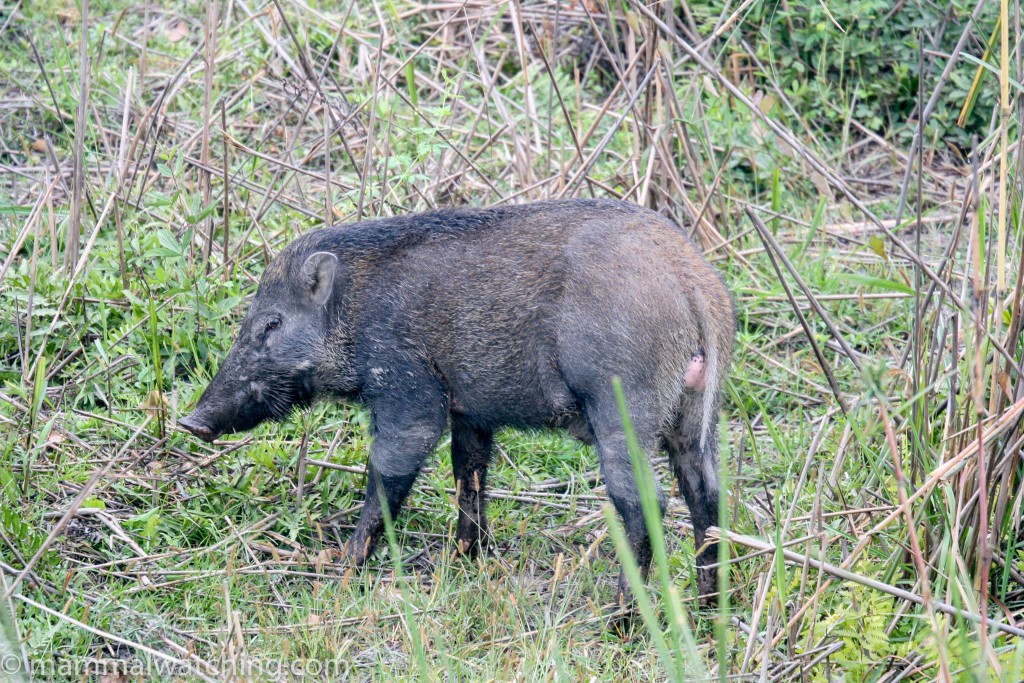
Wild Boar, Sus scrofa
The central section of the park was busier in the afternoon than my morning’s trip through the west had been. But after 10 minutes we lost the other vehicles and set out on a badger hunt. Once again, no badgers. But we saw plenty of Hog Deer, rhino, buffalo, Wild Boar and Hoary-bellied Squirrels. We also saw our first Elephants, another group of Smooth-coated Otters, a few more Swamp Deer and some Rhesus Macaques. And, though I had been warned that the park was super-strict about exiting no more than 15 minutes after sunset, we left a good hour after the sun had gone down. No one seemed to care.
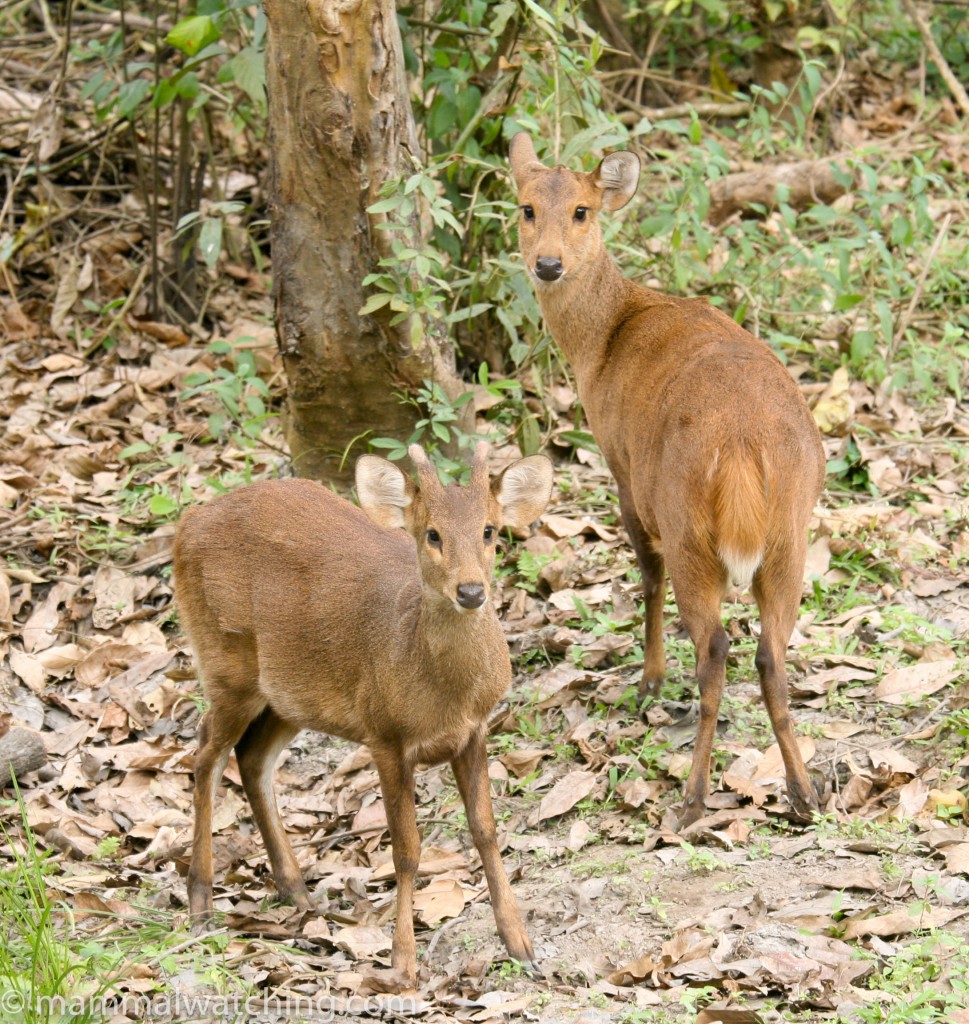
Hog Deer, Hyelaphus porcinus
I threw up a mist net when I got back to the resort and caught one smallish mega-bat, that keyed-out as a Dawn Bat, though it was very dark in colour and I want to check it out further.
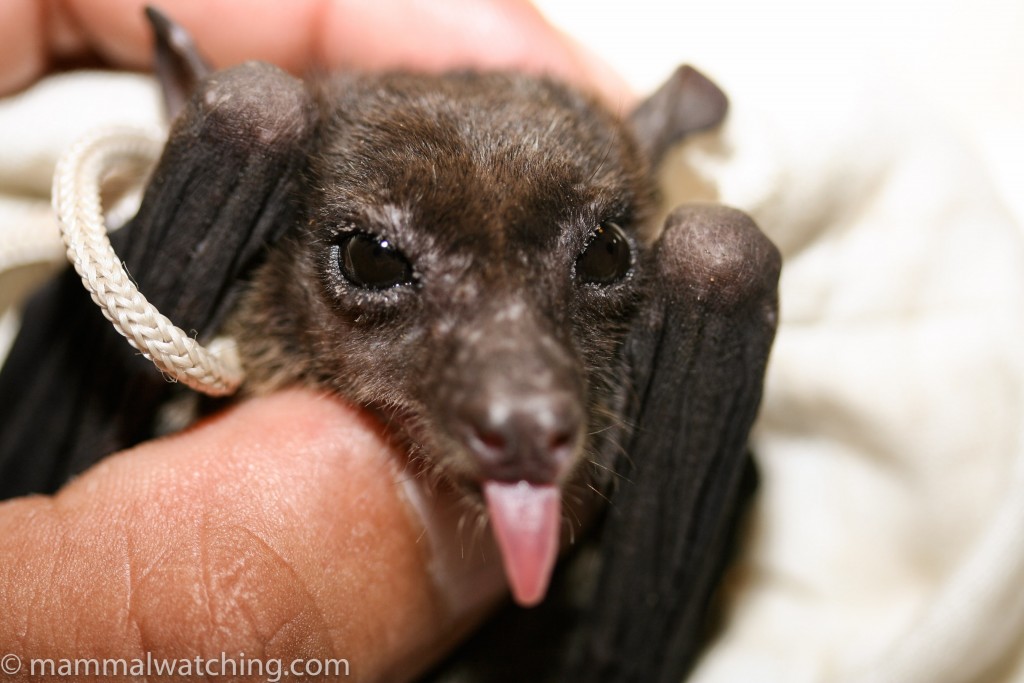
Cave Nectar (Dawn) Bat, Eonycteris spelaea
I took the 5 a.m. elephant ride in the central section the next morning, on the off-chance we might bump into a Hog Badger. We didn’t. But we did get close to plenty of rhinos and plenty of other tourists. Jeez, us tourists are an annoying bunch of cameraclickingbanaltalkingwannabeadventurers. I was ready to leave Kaziranga.
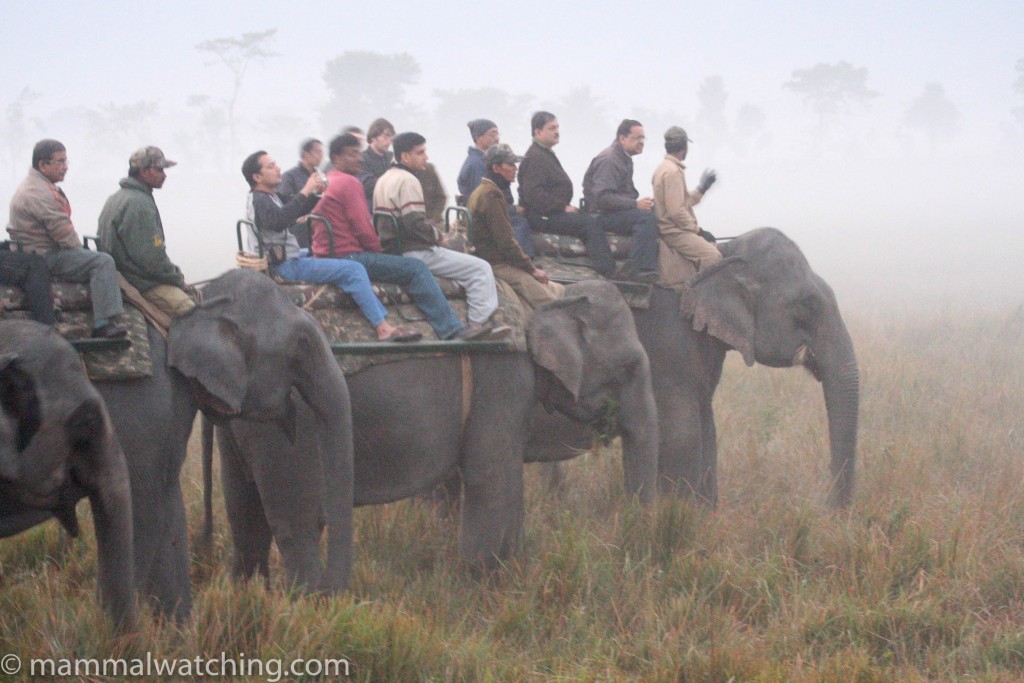
Rhino watching
On the way out of the park we spent a couple of hours in the very quiet – and recently opened to the public – eastern section. This section is mainly woodland so should be good for Hog Badgers. A stretch of the road overlooks a large meadow and water hole.
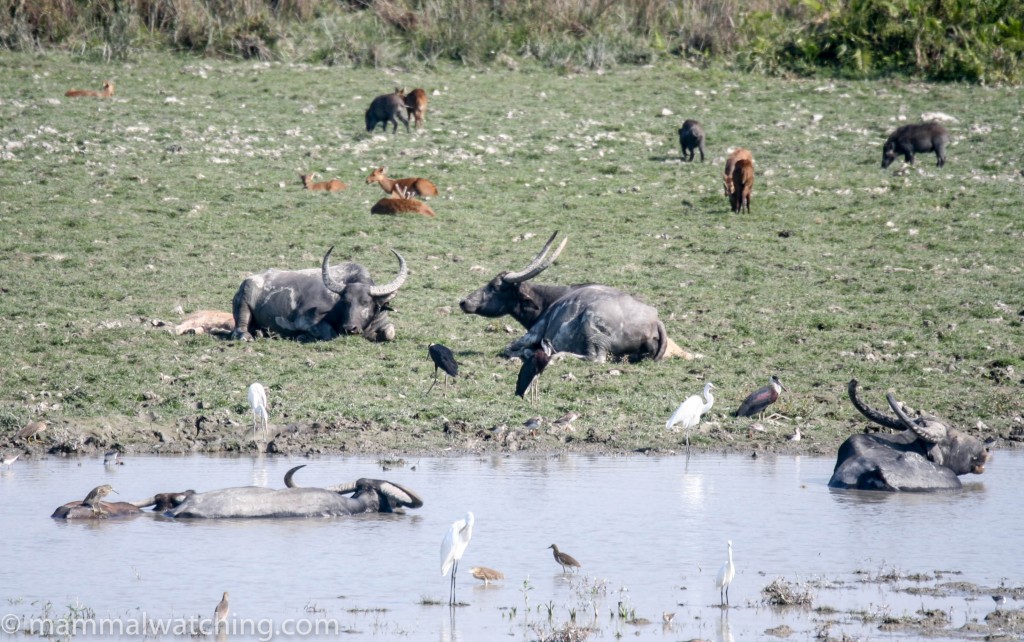
Waterhole
A herd of elephants, a few rhino, some Rhesus Macaques (which are much more golden here than in other bits of India), lots of buffalo and Hog Deer were the only mammals. A Tiger had killed an elephant calf here a few days earlier. The road also passes along a stretch of the Brahmaputra where River Dolphins and otters are sometimes seen. We saw neither.
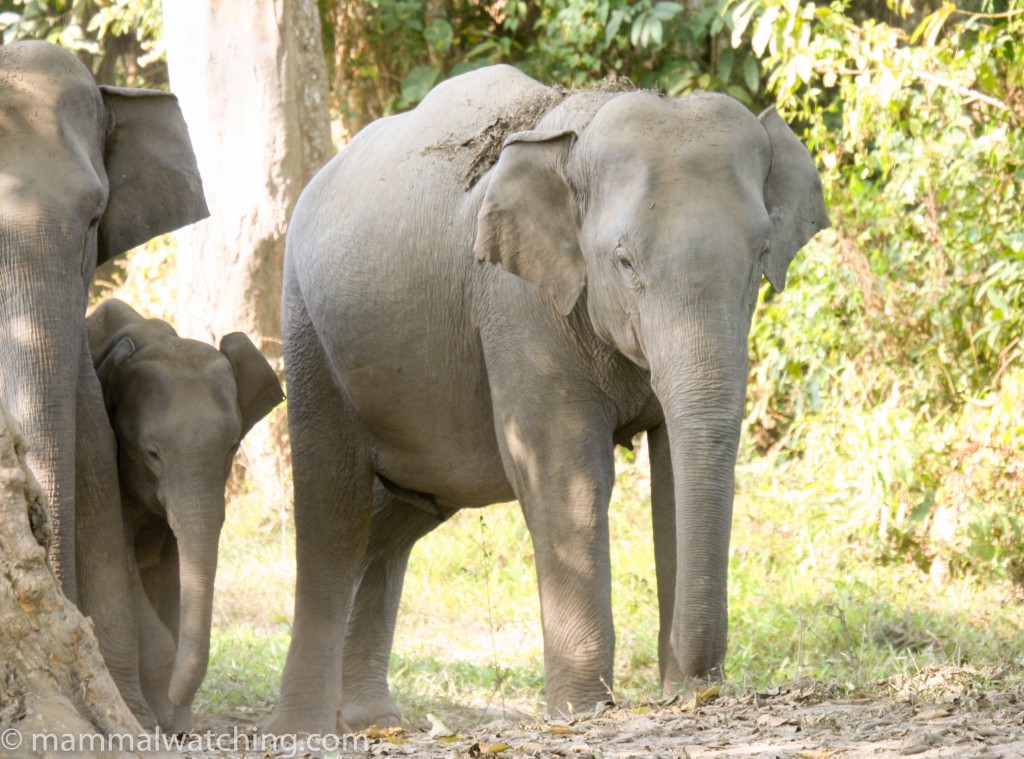
Asiatic Elephant, Elephas maximus
Gibbon Wildlife Sanctuary 
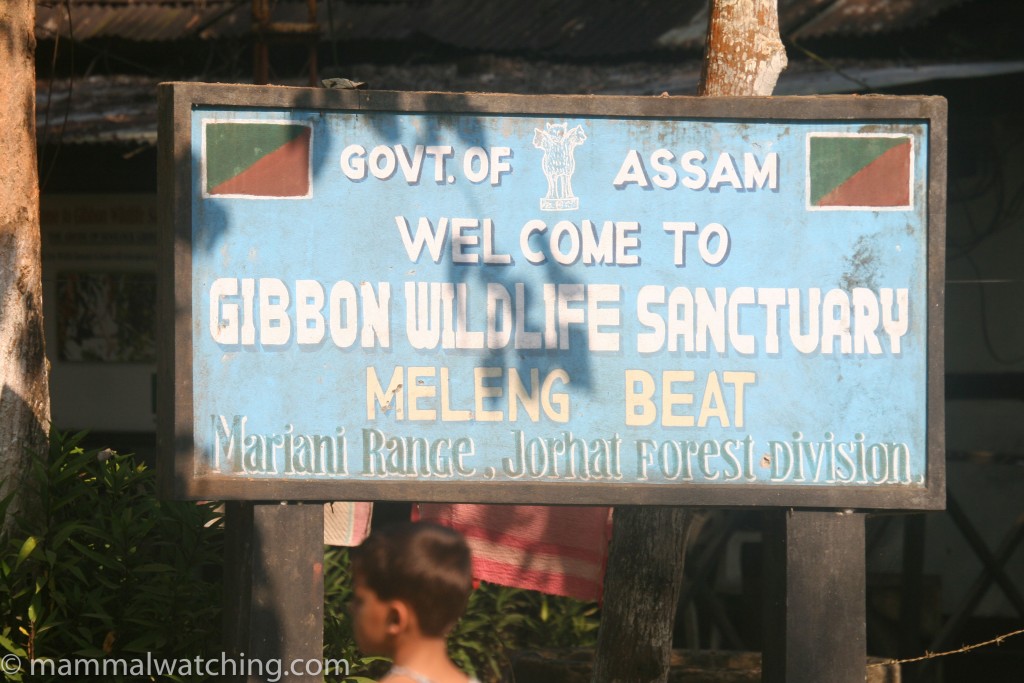
The Gibbon Wildlife Sanctuary is a small patch of rainforest an hour from Jorhat. It is possible to stay overnight, which we did: our group was now a cook, a driver and Jintu my guide. It is basic accommodation, but comfortable enough, and unlike the national park there were no visitors and you could walk or drive through the forest at night.
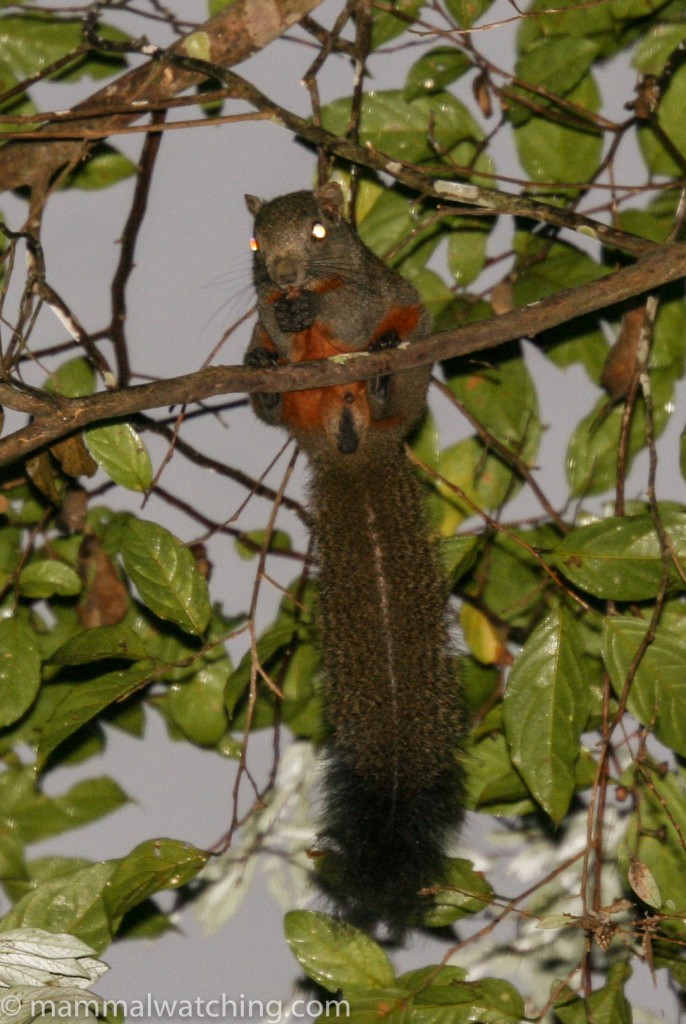
Pallas’s Squirrel, Callosciurus erythraeus
A dusk stroll produced a lot of Pallas’s Squirrels and an Elephant that was rather too close for comfort. Elephants here are not the habituated creatures of the national parks: one had killed a soldier in the nearest village the night before I arrived.
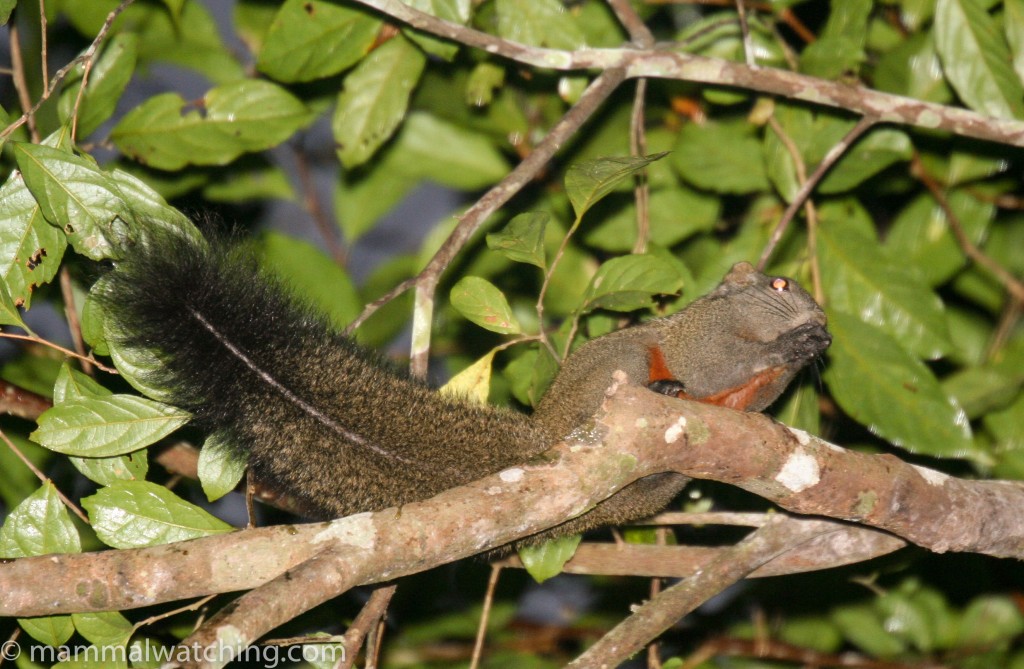
Pallas’s Squirrel, Callosciurus erythraeus
Three hours spotlighting that night was disappointing. The only mammal was a Common Palm Civet, though we heard several Barking Deer and Devan (the park’s most experienced ranger) identified some rustling just off the road as a Porcupine. But we couldn’t see it.
I was up at 4.30 a.m. the next morning and walked for five hours along the trails. It was very quiet. Pallas’s Squirrels were active at dawn but then disappeared. I saw my first Hoolock Gibbon at sunrise but it was another three hours before we saw more. There are 21 groups in the forest and we saw several of them. We also saw a few Malayan Giant Squirrels which are very common here.
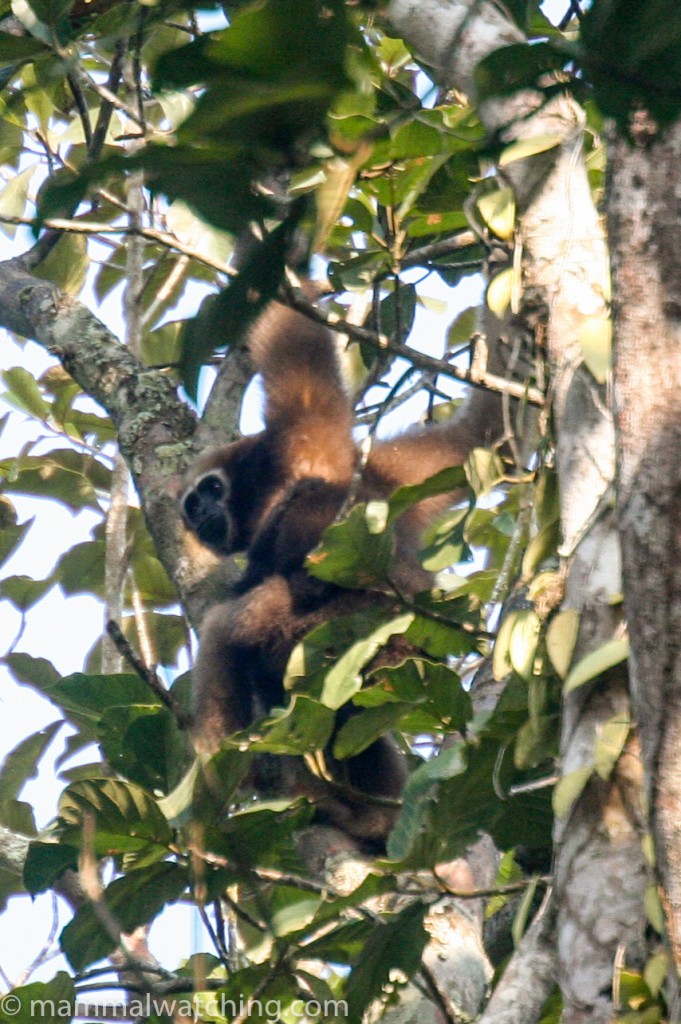
Hoolock Gibbon, Hoolock hoolock
Back at the Bungalow we saw Capped Langurs and Rhesus Macaques, and I saw more langurs, Giant Squirrels and some Pig-tailed Macaques while driving along the main road through the forest at midday. We missed the Assamese Macaques (which I made no effort to see) and more surprisingly the Stump-tailed Macaques which I did look for a little: there are only two groups in the park but each group numbers more than 100 animals.
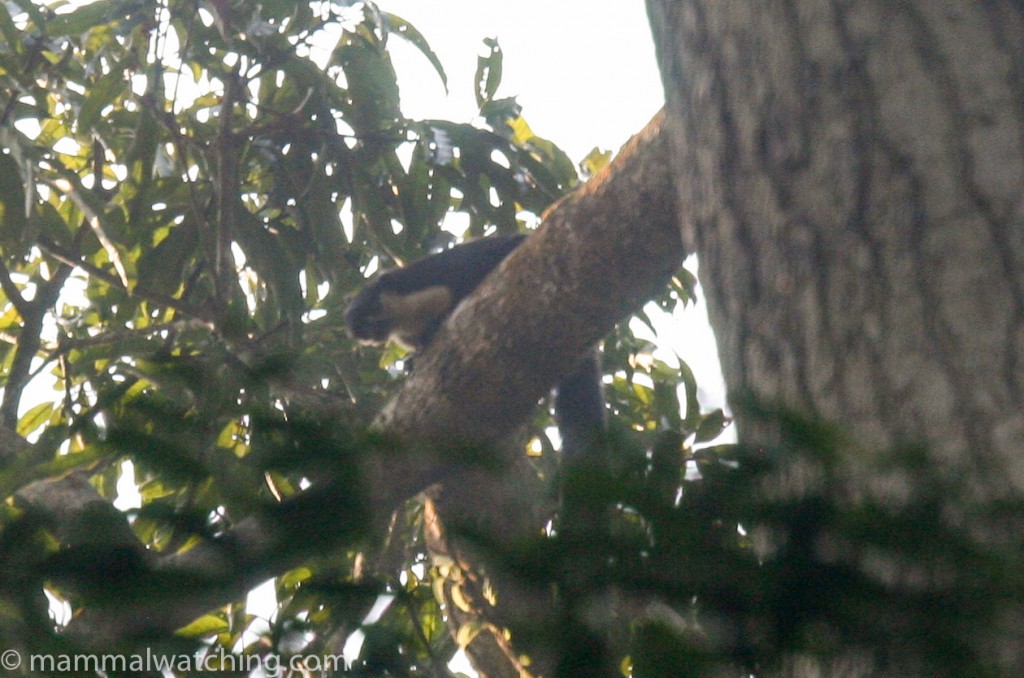
Malayan Giant Squirrel, Ratufa bicolor
There are some interesting species here: Slow Lorises are the Park’s 7th primate, Hog Badgers are seen quite often, and Marbled Cats and Indian Pangolins are present too (though Devan had only seen two pangolins in 20 years in the park). Small Indian Mongooses are apparently quite common.
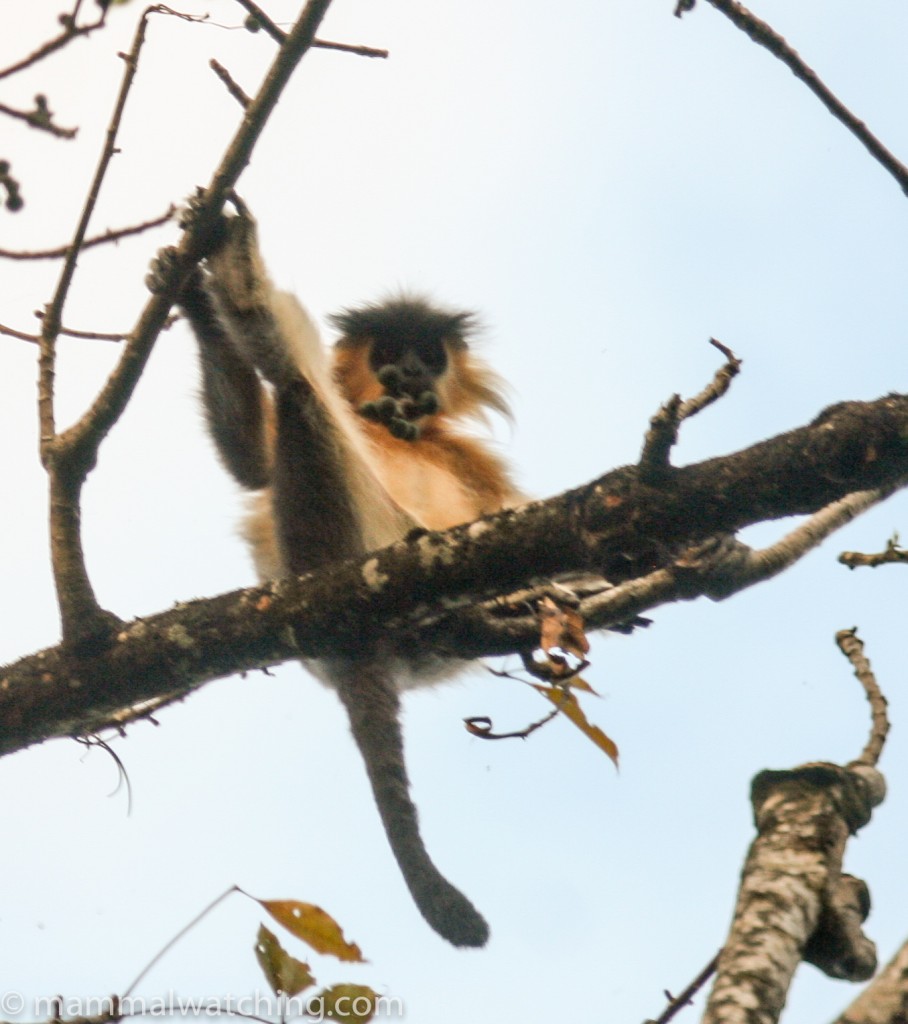
Capped Langur, Trachypithecus pileatus
On the way out of the park a local college were visiting and I had to give a speech to the group about why I was there. It is that kind of place and well worth a visit.
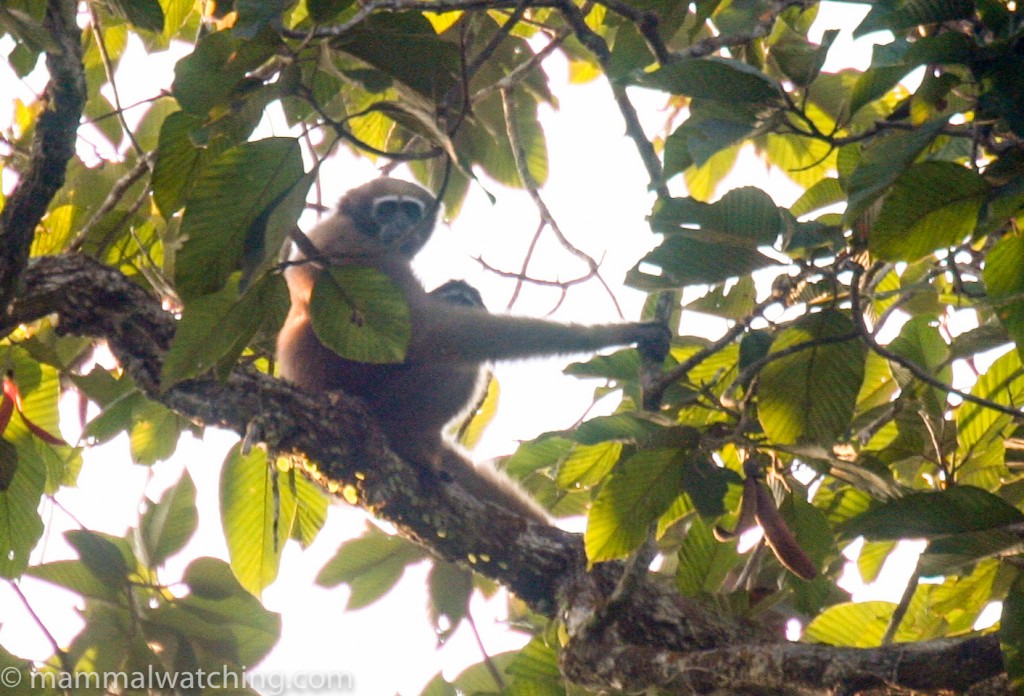
Hoolock Gibbon, Hoolock hoolock
This was only a short trip and although I managed to see the three species I was looking for most, it was a bit disappointing not to have seen some of the other animals on my list, especially porcupines and Hog Badgers. I think I was unlucky in part, and with more time in Manas and Kaziranga would have seen both. However, the numbers of tourists in the national parks and the strict rules about spotlighting leads me to think that next time I am in India I will focus more on the Wildlife Sanctuaries: these seem better set up for the enthusiastic naturalist, than the national parks (though Kaziranga is a great if you can get away from the tourists).
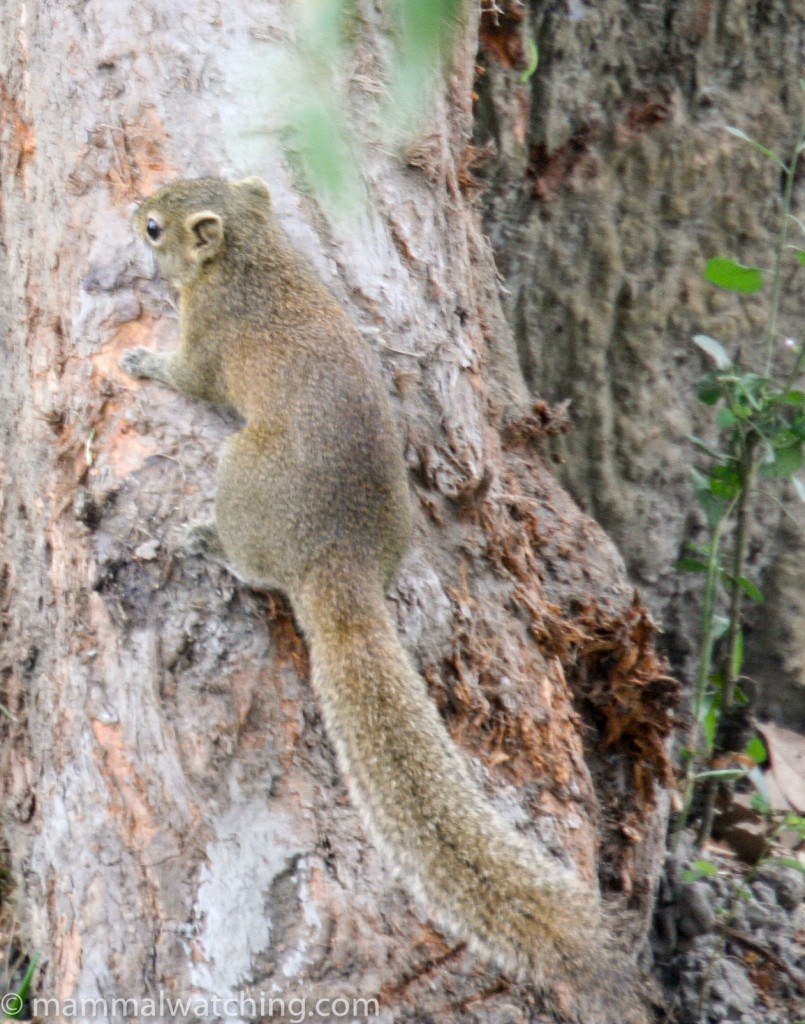
Hoary-bellied Himalayan Squirrel, Callosciurus pygerythrus
Trip List
Hoolock Gibbon
Capped Langur
Rhesus Macaque
Pig-tailed Macaque
Indian Elephant
One-horned Rhinoceros
Gaur
Water Buffalo
Sambar
Hog Deer
Northern Red Muntjac
Swamp Deer
Wild Boar
Dhole
Common Palm Civet
Smooth-coated Otter
Indian Flying Fox
Dawn Bat
Malayan Giant Squirrel
Hoary-bellied Squirrel
Pallas’s Squirrel
Indian Hare
Gangetic River Dolphin
23 species


Leave a Reply
You must be logged in to post a comment.